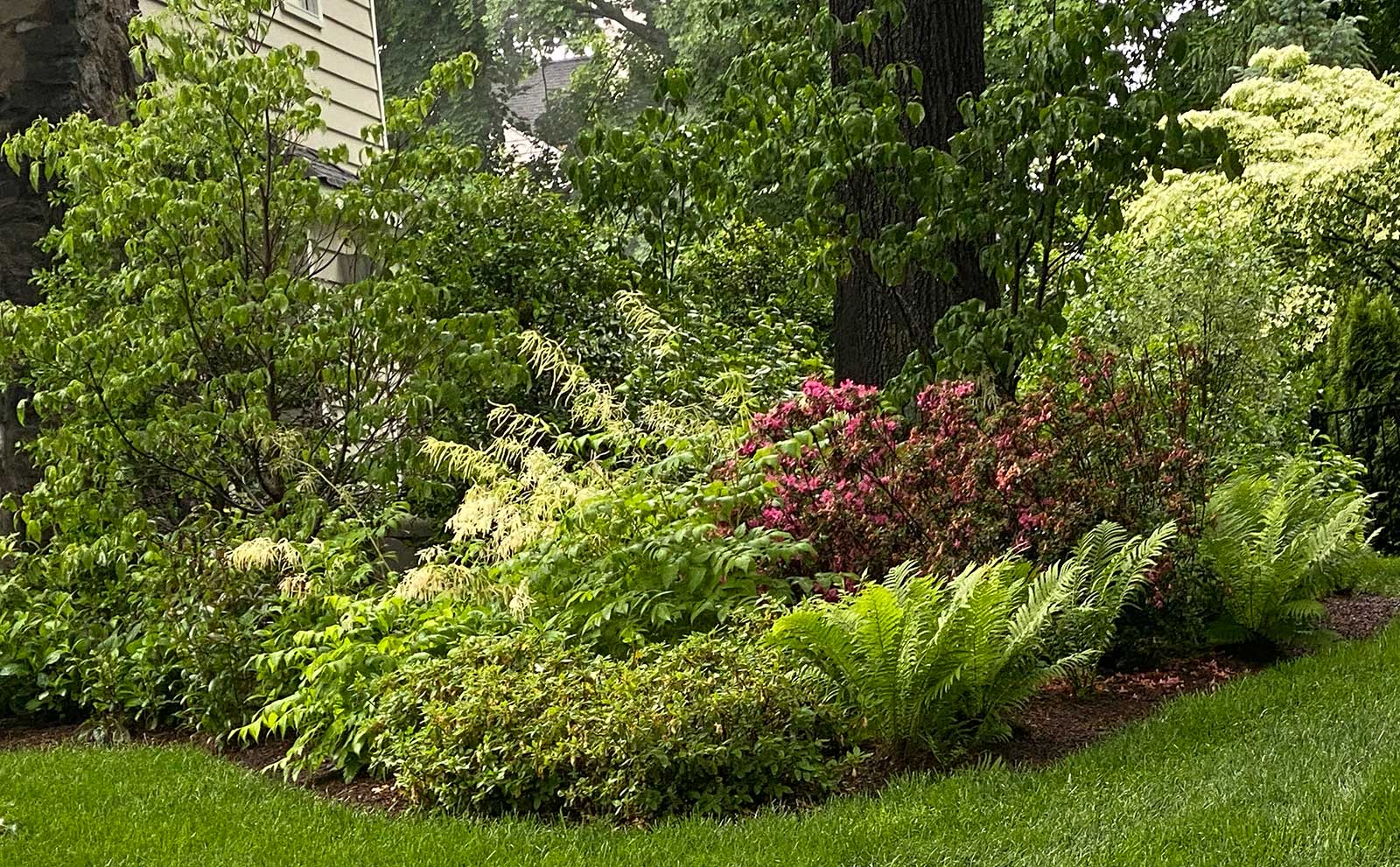Residential Eco-System – 2 Years Growth


“Nature does not hurry, yet everything is accomplished.”
Patience is a virtue, especially in gardening.
Remember long, long ago when receiving mail meant waiting patiently for the mailman to deliver it? These days we tend to complain when an email takes over five or six seconds to load. Gardening is a welcome and rejuvenating return to a quieter, more patient time, which is part of its charm. An acorn still takes decades to form a pleasant shade tree. Landscapes only grow as fast as Mother Nature permits, such as this example of the growth of this eco-system created in Ridgewood during a transition to organic landscaping over the course of two to three years.
 As with any eco-system, patience is the key. True beauty must have depth and soul. It takes time to develop these qualities. And patience. The process of an organic transition does not happen overnight. When you watch your plants grow over the years, you see how the contours of your garden change as it matures, much like we ourselves do. You begin to develop a keen eye for what it needs year by year. You add in and amend things gradually. You go on strolls wherein you often simply wander and lose yourself in the garden through observation and interaction with Mother Nature.
As with any eco-system, patience is the key. True beauty must have depth and soul. It takes time to develop these qualities. And patience. The process of an organic transition does not happen overnight. When you watch your plants grow over the years, you see how the contours of your garden change as it matures, much like we ourselves do. You begin to develop a keen eye for what it needs year by year. You add in and amend things gradually. You go on strolls wherein you often simply wander and lose yourself in the garden through observation and interaction with Mother Nature.
Intimacy develops with the garden from seeing it at distinct times of the day. Filling in what is needed to give it life and breadth throughout different moments of sunlight, weather, seasons, and moods. A garden has to go through a few cycles before it will reveal what else it requires. As seen in the growth and aging of this eco-system, the plants need to mature, wildlife needs to be enticed to create habitats within the beds and find nourishment, thereby pollinating your plants for even more growth. The creation and implementation of an Eco-system requires gardeners and property owners who are willing to be patient and give Mother Nature a chance to grow into herself. A garden planted with patience can, over the years, become a road map of your life. You will remember when you did this over here, or that over there.
It is the stages of your life in full bloom. The memories are all there for you to pore over like a well-thumbed scrapbook. All you have to do is to dig up the soil, nestle each plant into its new home, tend to it, feel gratitude – and be patient.







(Plant Species)
Pennisetum alopecuroides Hameln
The coppery tan bottlebrush plumes are held amidst the finely textured rich green foliage. A showy grass from late summer into winter. Pennisetum Hameln is a dwarf variety that will be at home in any size border. Golden fall foliage.
Rhus aromatica ‘Gro-Low’
Gro-Low fragrant sumac
Named for its spicy citrus fragrance, this sumac will form a low colony and grows in dreadful soils that other plants would find intolerable. The fall color is a vibrant red to orange, and birds flock to the clusters of red, fuzzy berries. ‘Grow Low’ is a dwarf selection.
Fringe tree | Chionanthus virginicus
Fringe tree grows as either a wide-spreading, multi-stemmed shrub or a small tree. Useful in native woodland gardens, as a specimen plant, in groups, borders, or near large buildings. The fringe tree’s most outstanding feature is the fragrant, strap-like, white flowers that are borne in 6 to 8 inch long fleecy panicles in late May to early June.
Lincoln Landscaping
THE NATURAL CHOICE
At Lincoln Landscaping cultivating the environment is our life and livelihood. It is our number one goal to help our clients create and maintain beautiful landscapes while reducing the impact on the environment. Whether you are interested in a pollinator landscape garden design and build or other landscaping or property management project; we can create for you an environmentally friendly, organic and beautiful property.
Leave us a review on GOOGLE and tell us how we did……




